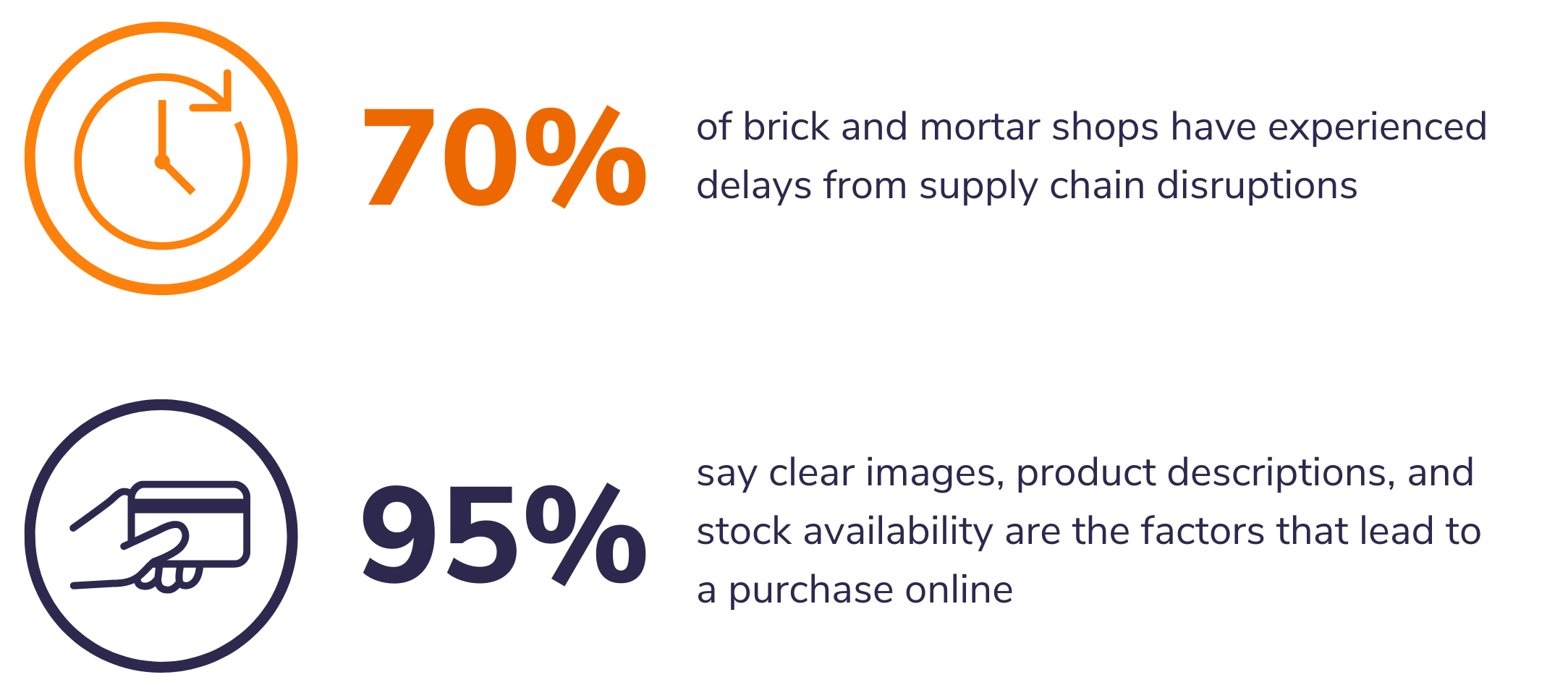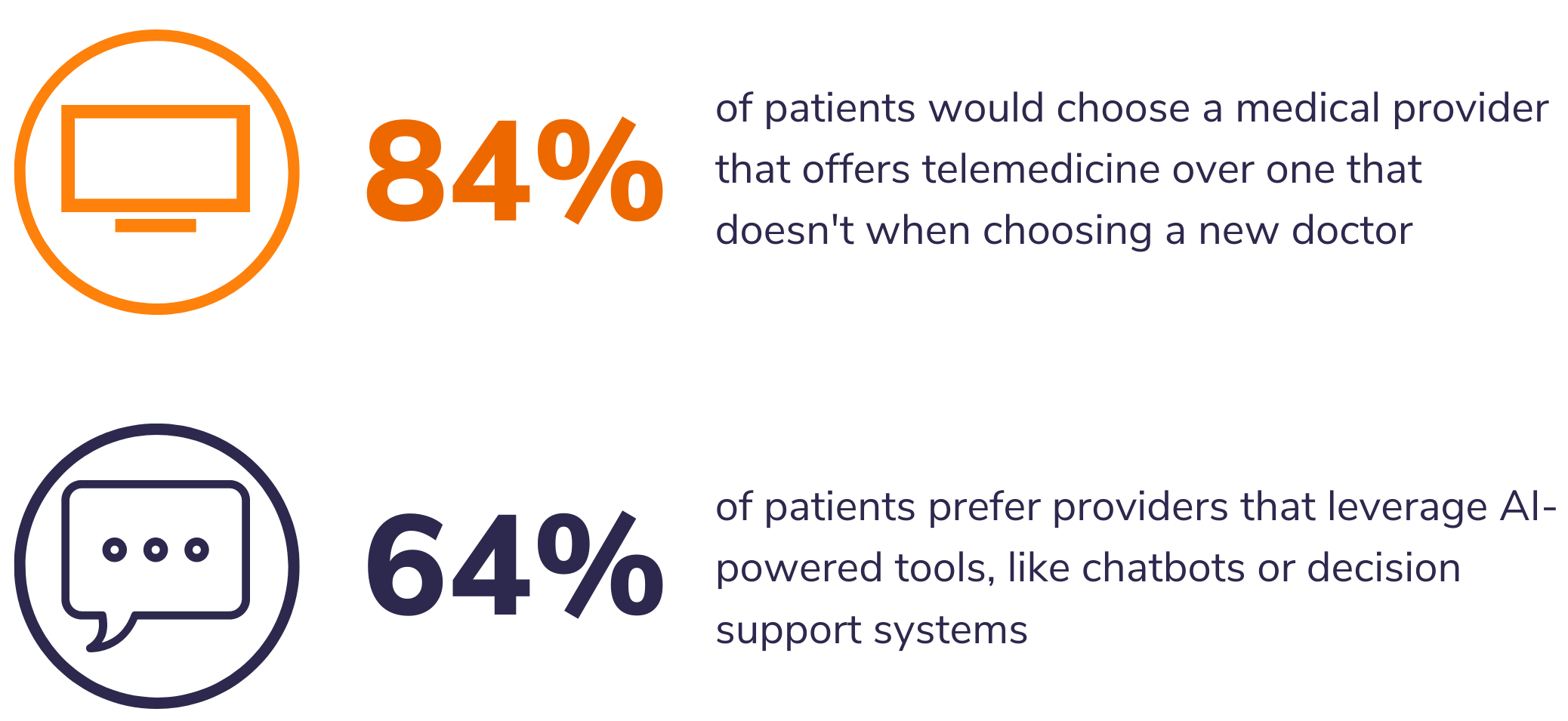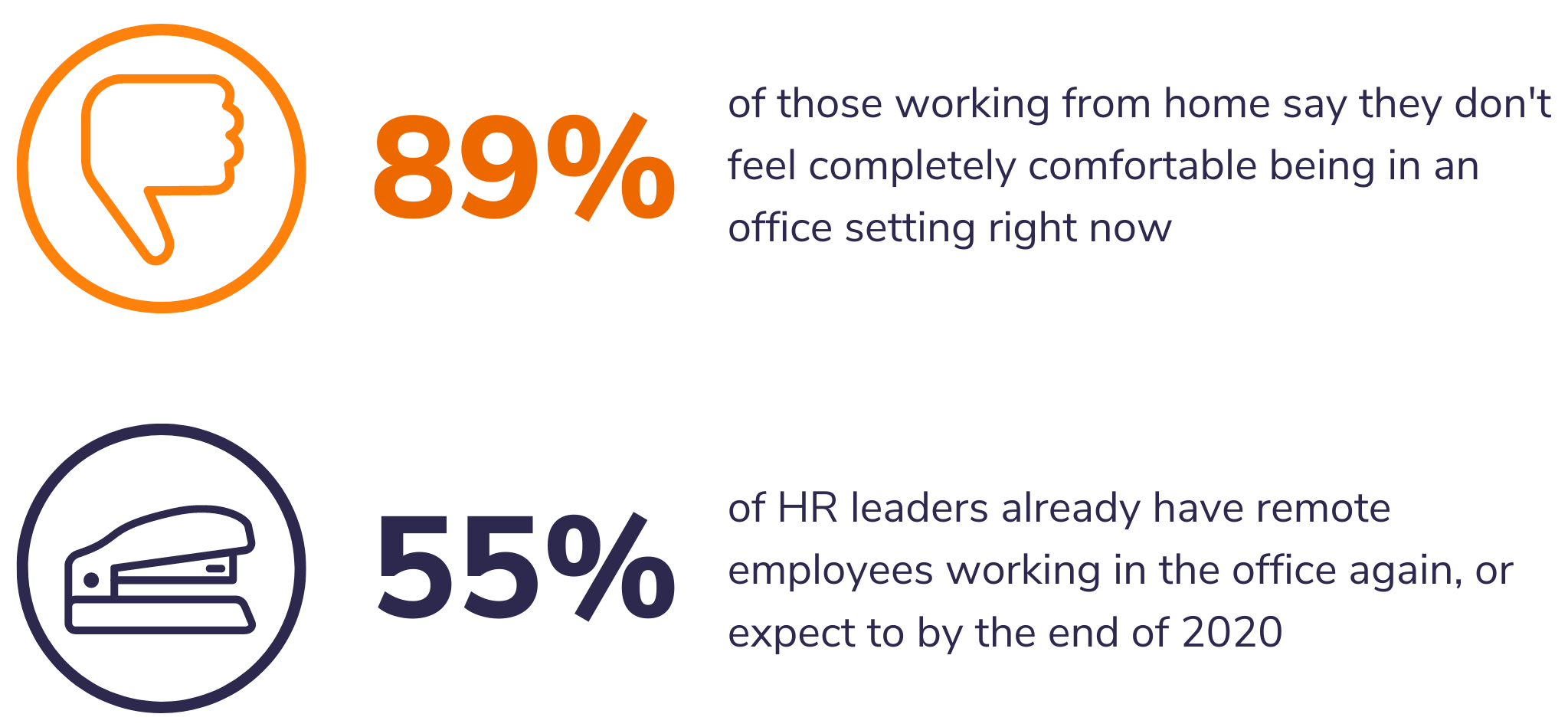2021 Is the End of Non-Digital Businesses
I have a new habit I’m forming this year: I like to take a moment, at the end of each day or week, to jot down a couple lessons learned.
Here’s what I learned recently:
Schedule breaks between meetings
Be super clear about how software features help businesses
If my toddler says she needs to use the restroom, DO NOT WAIT!
Simple stuff, but they’re all tangible actions that will help maintain what is truly important, whether it’s my energy level throughout the day or the happiness and comfort of my child, who is always threatening to videobomb my next call.
And as I’ve heard directly from small business leaders over the past several months, the challenges they face are not only sudden—many are entirely new. Their most loyal customers can no longer just pop in on the way to work, employees need a spectrum of new guidelines to be safe and productive, and in a year of record-setting online sales, their website really needs to perform.
More than 31 million small business owners faced these challenges in 2020. Unfortunately, many non-digital SMBs that were struggling back in May are likely no longer in business, while those who embraced technology as a permanent part of their strategy future-proofed their company.
2021 is the end of non-digital businesses. Don’t learn this lesson the hard way. Our extensive research this year reveals the software-supported strategies for every successful small business moving forward. Here are my three lessons learned, along with the actions to take now.
Lesson #1: Your online shopping experience should be as seamless and engaging as your physical store
There was a time before COVID when small retailers were deciding whether to start a website, even as Amazon and other massive brands swallowed up more of the market. At the same time, digital-first brands began actually opening permanent storefronts. Seems like another world, doesn’t it?
But following 2020, the future is clear: Most consumers plan to shop more online and less in-store, and an online presence is no longer optional. Forward-thinking retailers already knew that, but our latest research shows that simply being online isn’t enough. Your online store only drives sales when products are clearly described and actually available—if not, your customers will click elsewhere.

Source: Software Advice COVID-19 Retail Digital Transformation Survey 2020
Take Action: The best response here? Integrate modern POS software to manage consistent product information wherever you sell, then adopt inventory management software so that when customers click on an item, it’s actually available to buy.
We also see small retailers launching virtual events for the first time and finding great success showing off new products in a visual, interactive way that leads directly to sales.
Physical stores are still important, as COVID impacts regional regulations differently, but the new goal is to merge the online and in-person experiences so customers can get as close to touching and feeling the product as possible while at home.
Innovative retailers are staying connected with customers in ways that are exciting for customers and affordable for small businesses.
Our own Rachel B. Lee discussed these strategies with retail expert Nicole Leinbach-Reyhle at length to learn about omni-communication across social media, email, and text, scheduling virtual appointments, and interacting with buyers online through “shopper-tainment”.
“Technology provides the opportunity for retailers to connect to consumers at both their leisures,” Leinbach-Reyhle says. “It’s not just about the customer getting what they want on their terms, it’s also about the retailer saying, I’m going to still connect with you…whatever this holiday or season might bring.”
Lesson #2: You don’t have to sacrifice quality for convenience
I predicted last year that the vast majority of businesses would finally adopt cloud software in 2020. I actually got that part right, but not for the reason I expected. Either way, many figured out this year that digitizing important parts of the business doesn’t have to impact quality.
I was front-row for the perfect case study this year when healthcare businesses quickly began video calling patients. And I mean _quickly—_we saw a staggering 4000% increase in demand for telemedicine tools at Software Advice in just 12 months.
It makes perfect sense. Between the low-cost and efficiency for all parties involved, the mainstream adoption of telemedicine software was inevitable. COVID simply moved the deadline to immediately.
Multiple physicians and therapists told us they can see more patients in a day via telemedicine for simpler questions and spend more time treating patients with serious in-person needs. Besides, patient satisfaction begins by listening to the patient, and they’ve had a lot to say this year.

Source: 2020 Patient Experience Survey
Telemedicine, check. Beyond that, it seems that most patients prefer other technologies that streamline the process of gathering health history and insurance details, and get them face-to-face with a doctor quickly.
Take Action: AI-powered chatbots and decision support systems fit the bill, and 74% of patients say these improve their experience. Most are familiar with chatbots and comfortable asking them medical questions, and decision support systems leverage AI to spot wrong dosages or other harmful errors. These consumers will appreciate this convenience in their shopping experience as well.
And when you adopt this, show it off! Physicians play an especially critical role to support those directly impacted by the pandemic, so let your patients (or customers) know you’ve invested in these technologies to provide them with the optimal experience.
Lesson #3: Give workers flexibility to be productive and happy
HR leaders are in a tricky position right now. They’re helping their remote workforce manage productivity challenges, handle sporadic hiring demands, and most of them, according to our latest research, are working to safely bring employees back to the office.
Like telemedicine for healthcare, remote work is the new norm moving forward for HR professionals, managers, and employees. Between the safety of a physical location and the morale of remote teams, tracking all your people can be difficult.

Source: Software Advice COVID-19 HR Impact Survey 2020
Take Action: One effective method for striking a comfortable balance is hybrid scheduling, where workers can come into the office when they need (or want) to. Businesses can stagger who comes in on Monday versus Tuesday, or give working parents some leeway to work in the evenings.
This doesn’t make sense for every business, but these gestures of flexibility mean so much to your employees, especially right now.
A lot of managers are hesitant to allow employees out of their sight, because without the right tools, how could they really know how everyone is doing? Increased flexibility means a shift towards evaluating employees on what they produce instead of how long they sit at their desk.
And again, like moving your store online or offering remote doctor visits, tracking a complex mix of different worker styles requires more than just a change in perspective.
The right software will bring everyone together—time tracking is important, but project management and collaboration systems show managers the actual work being done. And pulse survey software generates regular, consistent metrics to understand how workers feel and how productive they are at home.
Learn as a community and move forward together
If there’s anything else I’ve learned, it’s that 2021 is the year when non-digital companies will feel the most pressure to adapt to the changing landscape. Strong companies withstanding the challenges of 2020 are those who digitized early and could quickly pivot as lockdowns changed everything.
But still, the top of my gratitude list reads “community,” including the businesses I’ve seen support each other, their customers, and the experts who’ve offered their advice. Engage your own community to learn these lessons together.
As part of this community, we can help you kickoff your digital transformation. Connect with our software advisors to get started with confidence.
Methodology
The Software Advice COVID-19 Retail Digital Transformation Survey was conducted in April 2020. We collected 503 responses from small business leaders, defined as presidents, vice presidents, C-suite members, owners, or founders at U.S. companies with 2-250 employees.
The Software Advice Patient Experience Survey was conducted in February 2020 among 990 patients in the United States. We used screening questions to narrow respondents to those with relevant healthcare histories and experiences. We worded the questions to ensure that each respondent fully understood their meaning and the topic at hand.
The Software Advice COVID-19 HR Impact Survey was conducted in August 2020. We surveyed 123 HR “leaders,” defined as CHROs, HR vice presidents, HR directors, HR managers, or any other role with HR leadership responsibilities at U.S.-based businesses. We worded the questions to ensure that each respondent fully understood the meaning and the topic at hand.